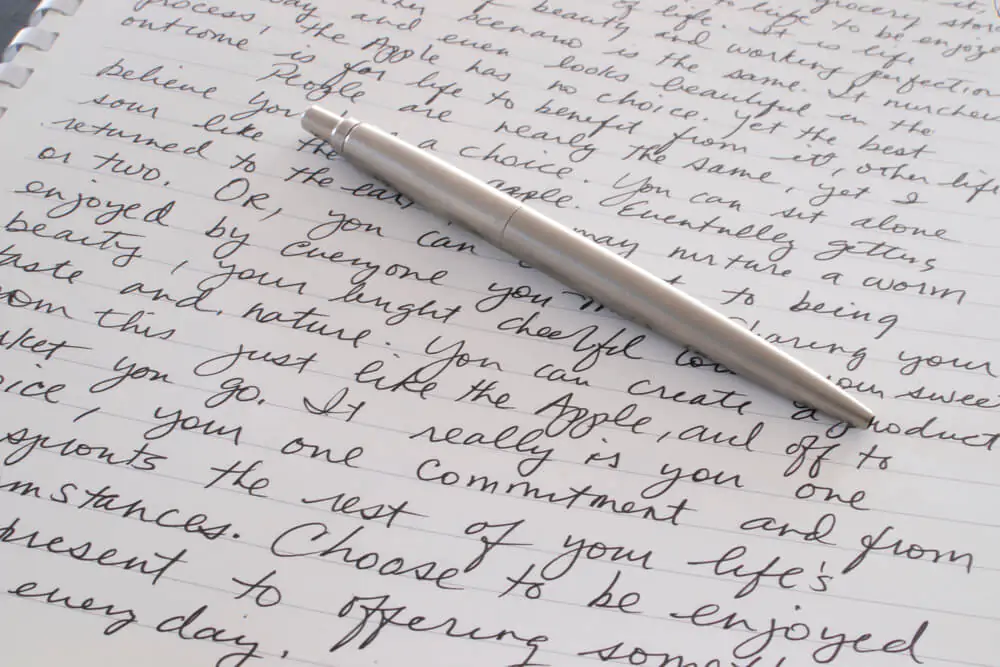We’ll explore everything you need to know about how many lines belong in a paragraph, line spacing, and indents.
If you’re taking a writing class or submitting a piece of writing to a publication, you likely have a word, paragraph, or page requirement, and you want to be sure you’re getting it right. Understanding how many words you need to complete your writing, paragraph spacing, formatting, and the other rules of thumb your teacher, professor, or editor expects you to follow can help you stop worrying about technicalities and focus on the heart of what you want to say to grab your reader’s attention.
The length of your paragraphs can impact the readability of your piece. Longer paragraphs can be great for personal narratives, but shorter paragraphs work better for dialogue and news-related or opinion-driven pieces. Understanding when it’s time to start a new paragraph, when to use short paragraphs over long paragraphs, and how to decide the number of sentences in each paragraph is key for keeping your reader engaged.
Without further ado, let’s dig in–here’s what literary experts agree on when it comes to the right way to format your paragraphs.
Grammarly is one of our top grammar checkers. Find out why in this Grammarly review.
Contents
Four Important Rules to Follow:
Here are four points to consider when structuring paragraphs in your next writing project:
1. The Five Sentence Rule Of Thumb

According to the experts at Grammarly, most writers agree that a five-sentence paragraph is a good rule of thumb to follow. Five lines per paragraph are enough space to form a full thought without being so long that your reader struggles to follow what you’re trying to say. Not all paragraphs need to be exactly five sentences, but generally, this is a good rule to follow in the body of your work.
Each paragraph should capture an idea. In academic writing, each paragraph can start with the main idea and be followed by three sentences that make a slightly different point. The final sentence of the paragraph can sum up the general gist of the topic sentence and supporting point.
When starting a new paragraph, you may choose to skip a line to create a defined separation. Refer to your submission guidelines to see whether your teacher or editor prefers this style. You’ll also want to be sure that you indent each new paragraph. Microsoft Word and Google Docs both offer standard indentations, making it easy to create uniform indents throughout your document.
2. When Shorter Paragraphs Make Sense
You’ll find that some of your paragraphs need to be shorter than five sentences, while others need to be longer. An easy way to figure out whether your paragraphs are too long: glance over your text without actually reading the words. When you see large blocks of text, see if there’s a way for you to break it down into two or three separate paragraphs.
Today, many people are used to reading short chunks of information, not long blocks of sentences. Try to go shorter when you decide between keeping a longer paragraph or breaking it into smaller blocks of five sentences or less.
3. Narrative Versus Academic Writing
If you write both narrative and academic pieces, you’ll likely notice a different flow to your writing, depending on your style and audience. Narrative writing typically lends itself to the greater variation of paragraph sizes, while academic writing consists of more uniform paragraphs.
If your narrative writing contains dialogue, be sure to follow grammatical and formatting rules, breaking up each line of dialogue into a new paragraph. This doesn’t just help you keep track of who is speaking as you’re writing–it also helps your reader understand the flow of conversation between characters without getting lost in a jumble of text.
When you’re writing a narrative piece, don’t underestimate the power of the occasional single-sentence paragraph. If your character is working to make an important point or has a game-changing realization, writing the idea out as a single line can draw your reader’s attention to its importance.
4. Single- And Double-Spacing

Formatting is key to handing in work for a middle school, high school, or college class and submitting work to a professional publication. Editors and educators often read hundreds of pieces of writing in a day, and your work must be formatted to allow them to easily read your work and provide feedback so that you can improve.
Generally, most publications and educators prefer to read double-spaced papers over single-spaced ones. If you’re handing in a hard copy of your work for someone to edit and comment on, it’s easier to write notes in the spaces between the lines when you offer double-spaced work.
Your teacher or editor may also ask that you use specific margins to allow them plenty of room to comment on your work. If you’re writing for a class, you should have a syllabus that tells you the correct format for written work. If your teacher or professor did not hand out a paper syllabus, you should be able to find it online or on the class website.
Ask if you’re unsure whether your teacher or editor prefers double or single-spaced work. If you don’t get a response or are submitting a piece of work at the last minute (we’ve all been there!), err on the side of caution and submit a double-spaced piece.
If you still need help, our guide to grammar and syntax explains more.